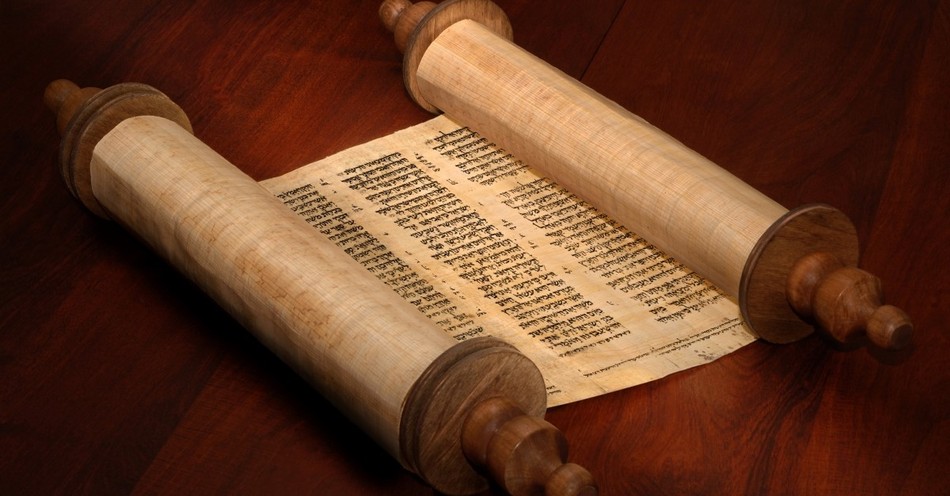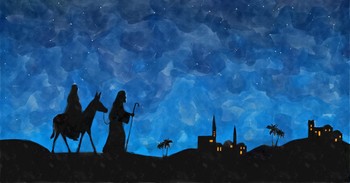You may have heard of the name Nimrod, at least as an insult. But it’s also a historical figure: a man mentioned in the Bible had that name, who apparently had a son named Tammuz. Tammuz later became the name of a deity in Ancient Mesopotamia but started as the name for a mere mortal. We will touch on both, as they had made appearances in the Bible (first during the time of Nimrod, and later—the deity—mentioned in the Book of Ezekiel), and as the deity of the Phoenicians likely infiltrated into some of Israel’s practices when they turned after other gods.
Who Is Tammuz in the Bible?
Tammuz’s name happens to be the name of a month in the Jewish calendar (June-July).
We don’t learn much about the mortal man Tammuz in the Bible. We only have extrabiblical legends to rely on to know that he could’ve possibly been one of Nimrod’s sons.
For those unfamiliar with Nimrod, he is mentioned after the time of the Flood. Rather than obeying God’s call to fill the whole earth, many people decide to stay in one spot and consolidate their power. They plan to build a tower to defy God, reach the heavens, and hopefully avoid getting swept up in another earthly flood.
Nimrod, the great-grandson son of Noah and a “mighty hunter” (Genesis 10:8) is traditionally believed to have led the Tower of Babel project.
He was likely a fierce man—some biblical scholars suggest he was one of the Nephilim, mighty men who were allegedly giants, the offspring of humans and rebellious angels. Some traditions go as far as to suggest Nimrod’s hunting wasn’t for animals . . . but, rather, for people. In short, Nimrod has come to represent pagan warrior societies at their most brutal—especially since the never-completed Tower of Babel is reportedly the founding spot of the later pagan empire of Babylon.
Scary, right? And if he had a son, we can imagine he would’ve been intimidating.
Who Is Tammuz in Ancient Near Eastern Religions?
The only reference we get to Tammuz is to the Phoenician deity in Ezekiel 8:14. We’ll touch on the mythology behind him. In Ezekiel 8, Ezekiel sees a vision of idolatry in the Temple of God. One of the things Ezekiel sees is a woman mourning over Tammuz, a false god. Ezekiel sees several other sacrilegious things, but Tammuz is the only deity mentioned in the vision, showing one of the foreign gods Israel had strayed after. So, let’s look into the mythos of Tammuz.
Tammuz, sometimes known as Dumuzid, was a shepherding deity associated with fertility. He was married to Ishtar, a nature deity. Ancient Near Eastern mythology depicts Tammuz as a minor god, perhaps a demigod (offspring of a god and humans). Many fertility cults have sprung up surrounding this deity.
Several myths feature Tammuz getting taken to the underworld. In one version, a wild boar kills him, and Tammuz has to spend six months in the underworld. Often, the myths involve Tammuz or Ishtar not mourning each other enough, swapping places in the underworld, and things like that. Every year, Tammuz gets to leave the underworld and “resurrect,” in a sense, which affects the seasons since he’s a nature deity. Depending on the myth, it is often Ishtar who helps with the resurrection. Ancient cultures often had two celebrations for Tammuz: one for his death (during the winter) and one for his “resurrection” (during the spring).
The context about Tammuz may help us understand the scene in Ezekiel 8 where a woman is mourning Tammuz—his death, the winter celebration. It also perhaps has a sad irony because the Tammuz myths feature resurrection, and God would send his Son, a few hundred years later, to bear humanity’s sins. This brings us to another important discussion: people often compare the myth of Tammuz to Jesus, sometimes arguing the similarities mean that Christianity has stolen from other cultures. Unfortunately, some people who view Christianity as a myth have used Tammuz as a comparison to Jesus. Let’s look at the concerns and flaws in this argument.
Are Tammuz and Jesus Really Similar?
Various ancient religions have myths about gods who die, coupled with promises that they will rise again. It happens in Norse mythology (Balder will rise again at Ragnarok), and perhaps in Greek mythology (Attis dies on a pine tree), and with Tammuz (rising again from the underworld).
Tammuz and Jesus have some strong parallels but aren’t as similar as we’d think.
- They’re both shepherds. Jesus refers to himself as the Good Shepherd, and Tammuz is a pastoral deity.
- They both died at the hands of jealous people. We knew people killed Jesus for his godhood claims, which upset the Romans and upset particular Jewish leaders who didn’t want him to upset the system. Tammuz is usually reported to have died due to jealous conflicts with other gods, and Ishtar’s jealousy that he didn’t mourn losing her enough creates more drama.
- They both resurrected. Jesus defeated death and sin in the process of the cross and three-day-later resurrection from the tomb. Ishtar eventually brings Tammuz back from the underworld.
However, these comparisons are not as clear as we may think. There are also significant differences between Tammuz and Jesus:
- Just because Tammuz is a pastoral deity does not make him a good shepherd. Jesus would lead his sheep into righteousness; as far as we know, Tammuz just liked sheep. Who knows what he would’ve done at the sign of a wolf?
- Two different kinds of jealousy factor into their death. Tammuz’s death involves pagan deities being petty. Jesus’ death involves people not wanting their religious or political power threatened.
- Although Tammuz “resurrected,” he needed help. Ishtar had to come down and fish him out. And even if he did it on his own, he keeps getting “killed” every year at the hands of what seems like a very petty deity. Jesus died and was resurrected once.
- We have detailed historical records of Jesus’ death and resurrection that don’t exist for Tammuz.
Is It a Problem that Tammuz and Jesus Are Similar?
The fact that the mythic story of Tammuz came before Jesus arrived on earth does not necessarily mean that Tammuz’s story informed how people told Jesus’ story.
Furthermore, the fact that there are various mythic stories about dying gods should not discourage us. Christian writers, including J.R.R. Tolkien and C.S. Lewis, have argued we miss the point if we look at myths about dying gods who rise again and assume their existence challenges Christianity.
Lewis suggests in various places, especially in his article “Myth Became Fact,” that the fact these myths are so common may mean that God was trying to hint at something he was going to do eventually. When Jesus died and rose again, the idea we find so fascinating in stories about Tammuz, Balder, and other gods . . . that event actually happened. Jesus did everything those pagan deities did in the stories but did it better and in the real world, leaving a historical record of what happened. So, we can see the Tammuz story as speaking to our inherent desire for a god who would rise again and rest, knowing that God fulfilled that need when he sent Jesus.
What Can We Learn from Tammuz in the Bible?
Tammuz was the possible son of Nimrod and a Phoenician/Babylonian deity who had caused some issues for the Israelites by the time of the Babylonian captivity. Here’s what we can learn from Tammuz in the Bible.
- God takes idolatry seriously. When Ezekiel sees the woman mourning for Tammuz at the Temple, we can feel the tragic tone in the passage. Israel had turned from their true God, who would sacrifice his own Son eventually, offering what people were seeking in a small, misguided way through pagan myths.
- There aren’t ancient equivalents for Christ. Many people will try to compare Babylonian deities with God the Father or God the Son. But once we analyze these similarities, we don’t see enough to make us worry. Christ’s story may have little bits that sound like myths but are different enough that we don’t have to worry that Jesus’ story is copied and pasted from myths.
- Studying myth helps. Tammuz may not cross our minds as often as other god names in the Bible—Ishtar, Baal, or Asherah. However, the more we know these gods, the more we can be ready to combat claims when people say that Jesus and Tammuz are the same. They’re not even close.
- Myth and history are different. While mythic stories can be fun, and writers like Lewis argue that myths can help us consider what we inherently crave (what universal needs do myths talk about?), we also remember that there is a difference between myth and history. We have historical evidence for Christ outside of the Bible (early ancient Roman documents mentioning him by name), so he did exist. The resurrection has never been disproven.
Photo Credit:©GettyImages/jgroup
Hope Bolinger is an acquisitions editor at End Game Press, book editor for hire, and the author of almost 30 books. More than 1500 of her works have been featured in various publications. Check out her books at hopebolinger.com for clean books in most genres, great for adults and kids. Check out her editing profile at Reedsy.com to find out about hiring her for your next book project.
This article is part of our People of Christianity catalog that features the stories, meaning, and significance of well-known people from the Bible and history. Here are some of the most popular articles for knowing important figures in Christianity:
How Did the Apostle Paul Die?
Who are the Nicolaitans in Revelation?
Who Was Deborah in the Bible?
Who Was Moses in the Bible?
King Solomon's Story in the Bible
Who Was Lot's Wife in the Bible?
Who Was Jezebel in the Bible?
Who Was the Prodigal Son?




